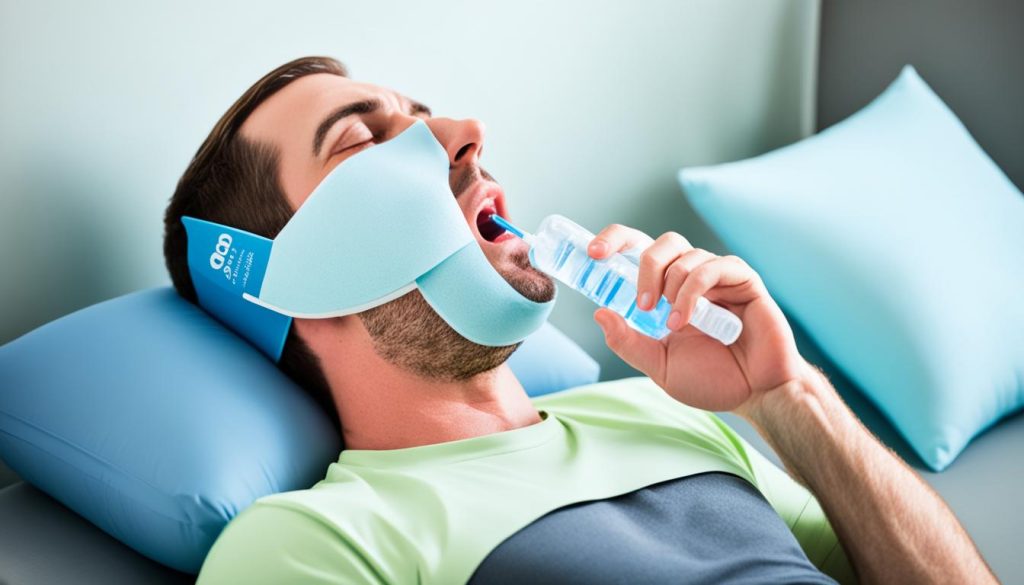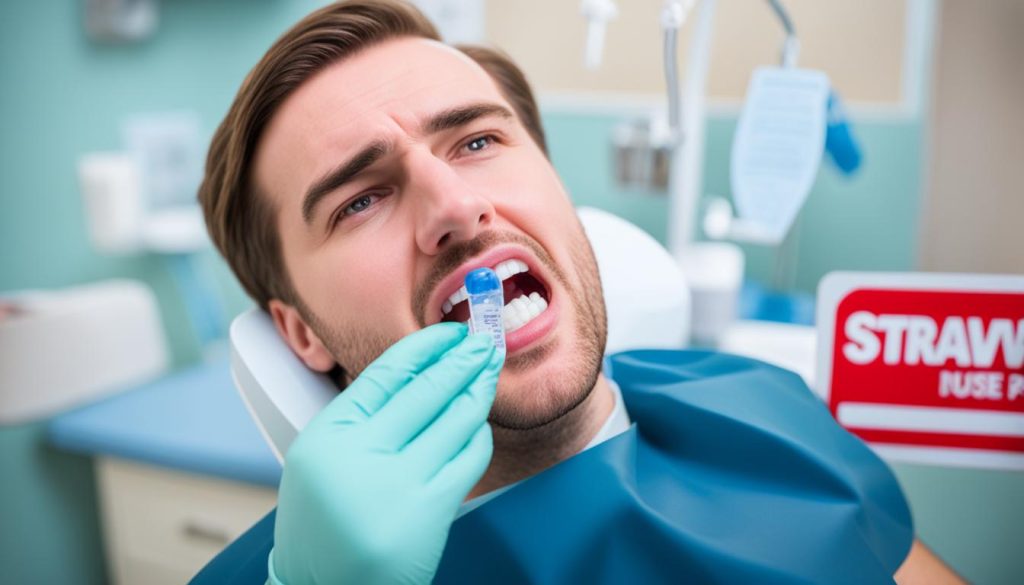Suffering from the discomfort of wisdom teeth removal is never fun, but understanding the proper care and precautions can lead to a smoother recovery. One common question that arises is when it is safe to use a straw after wisdom teeth extraction. In this article, we will explore the wisdom teeth removal recovery process, the importance of post-operative care, and when you can safely incorporate straws into your routine.
Wisdom teeth removal is a surgical procedure that demands post-operative care to ensure successful healing. During the immediate post-operative period (first 24-48 hours), it is crucial to avoid using straws completely. This precautious measure allows the surgical site to heal undisturbed, promoting clot stabilization and preventing complications such as dry socket.
In the first week post-surgery, it is generally recommended to continue avoiding straws. During this time, the extraction site is still in the early stages of healing and can be vulnerable to disruption. By following this guideline, you can further minimize the risk of complications and focus on supporting your recovery.
After the first week, the decision to use a straw may depend on your individual healing progress. Some dentists may allow the cautious use of straws if signs of good healing, such as minimal swelling, no excessive pain, and no signs of infection, are evident. However, it is crucial to consult with your oral surgeon or dentist for personalized advice tailored to your specific situation.
It’s important to understand the risks associated with premature straw use. Early straw usage can dislodge the blood clot, leading to complications such as dry socket, increased bleeding, infection risk, and increased swelling and discomfort. Following proper post-operative care and best practices is key to a smooth recovery.
In the upcoming sections of this article, we will delve deeper into post-operative care, recognize potential complications, and discuss the debate surrounding straw usage after wisdom teeth removal. By understanding these aspects, you can take the necessary steps for a comfortable and successful recovery.
The Importance of Post-Operative Care and Best Practices
After wisdom teeth removal, proper post-operative care is crucial for a smooth and successful recovery. By following specific instructions and adopting best practices, you can ensure optimal healing and minimize potential complications. Let’s explore the key aspects of post-extraction care and essential tips for a smooth recovery.
Dietary Guidelines
During the initial healing phase, it is important to stick to a soft food diet that is gentle on the surgical sites. Avoid hard, crunchy, or sticky foods that can irritate the extraction area or get lodged in the sockets. Opt for nutritious options such as soups, mashed potatoes, yogurt, smoothies, and soft fruits.
Maintaining Oral Hygiene
Good oral hygiene is crucial for preventing infections and promoting healing. Rinse your mouth gently with warm salt water a few times a day, starting the day after surgery. Gradually increase the thoroughness of your brushing without disturbing the surgical sites. Use a soft-bristled toothbrush and avoid mouthwash with alcohol, as it can impede the healing process.
Rest and Recovery
Rest is essential for a speedy recovery. Take it easy after the procedure and avoid strenuous activities for a few days. Make sure to elevate your head while sleeping to reduce swelling. Avoid smoking and consuming alcohol, as they can delay the healing process and increase the risk of complications.
Pain Management
Managing pain effectively is crucial for your comfort during the recovery process. Take any prescribed pain medication as directed by your oral surgeon or dentist. Applying cold compresses to your face can help reduce swelling and alleviate discomfort. Remember to follow the recommended dosage and duration for pain medication.
Image

This image depicts the aftercare practices that can contribute to a successful recovery after wisdom teeth removal.
Recognizing and Managing Complications
While most wisdom teeth extractions go smoothly, it is important to be aware of potential complications and know when to seek professional dental care. Recognizing the signs of complications and taking prompt action can greatly improve the recovery process. Some common complications after wisdom teeth removal include:
- Persistent bleeding
- Worsening pain
- Swelling that doesn’t subside
- Foul taste or smell
- Visible pus
- Fever or chills
- Difficulty opening the jaw
If you experience any of these symptoms, it is important to take immediate steps to manage the complications and prevent further problems. Here are some measures you can take:
- Control bleeding by applying gentle pressure with a clean gauze pad or cloth.
- Manage pain and swelling by taking prescribed medication as directed by your dentist.
- Maintain oral hygiene by rinsing gently with warm salt water.
- Stay hydrated by drinking plenty of fluids, but avoid using straws.
- Rest and give your body time to heal.
While these measures can help manage complications, it is important to contact your dentist if symptoms don’t improve or worsen, if signs of infection are present, if severe pain or bleeding occurs, if eating or drinking becomes difficult, or if dry socket is suspected. Your dentist will be able to provide appropriate guidance and treatment to ensure a smooth recovery.

| Complication | Signs and Symptoms |
|---|---|
| Persistent bleeding | Continued bleeding from the extraction site |
| Worsening pain | Increasing or severe pain that is not relieved with medication |
| Swelling that doesn’t subside | Persistent or worsening swelling around the extraction site |
| Foul taste or smell | Unpleasant taste or odor coming from the extraction site |
| Visible pus | Pus or discharge present around the extraction site |
| Fever or chills | Elevated body temperature and shivering |
| Difficulty opening the jaw | Inability to fully open or close the mouth |
Understanding the Straw Debate
The debate around using straws after tooth extraction revolves around the risks of dislodging the blood clot. The blood clot plays a crucial role in preventing uncontrolled bleeding and protecting the extraction site from infections.
Using a straw creates suction that can easily dislodge the blood clot, leading to complications such as dry socket and increased bleeding. It is important to avoid straws during the early post-operative period to allow the blood clot to form and stabilize.
Strict adherence to this precaution ensures a smooth healing process and reduces the risk of complications.
Risks of Using Straws After Tooth Extraction
Using straws after tooth extraction poses several risks, including:
- Suction and Blood Clot Dislodgement: The suction created when using a straw can dislodge the blood clot that forms at the extraction site. This can disrupt the natural healing process and lead to complications such as dry socket.
- Infection Risk: When the blood clot is dislodged, it exposes the extraction site to bacteria, increasing the risk of infection.
- Increased Bleeding: Dislodging the blood clot can result in increased bleeding, which can prolong the healing process and cause discomfort.
- Delayed Healing: Without the protection of the blood clot, the healing process may be delayed, leading to prolonged pain and discomfort.
Understanding these risks and avoiding the use of straws during the prescribed healing period is crucial for a successful recovery.
When Can You Safely Use a Straw After Wisdom Tooth Removal?
After wisdom tooth removal, it is crucial to follow post-operative instructions for a smooth recovery. One important aspect to consider is the timing for using straws. In the immediate post-operative period, it is advisable to avoid using straws completely. This allows the surgical site to heal properly and prevents complications.
During the first 24-48 hours after the surgery, it is best to refrain from using straws. This helps in minimizing the risk of dislodging the blood clot and promotes the initial healing process. Similarly, continuing to avoid straws during the first week following the procedure is recommended to ensure clot stabilization and overall healing.
However, it is important to note that the timing for reintroducing straws may vary depending on individual healing progress. Consulting with your oral surgeon or dentist is essential to receive personalized advice tailored to your specific recovery process.
To determine if it is safe to use straws, keep an eye out for signs of good healing. These include minimal swelling, no excessive pain, and no signs of infection. If these signs are present, it may be appropriate to slowly reintroduce the use of straws while being cautious.
Please note: Always consider your individual recovery progress before using straws and follow the guidance provided by your oral surgeon or dentist.
For more information on post-operative instructions and best practices, refer to the following table:
| Post-Operative Instructions | Best Practices |
|---|---|
| Avoid using straws | Follow the recommended timeline for reintroducing straws |
| Maintain good oral hygiene | Gently rinse with warm salt water and gradually increase brushing |
| Rest and recover | Avoid strenuous activities and elevate your head during sleep |
| Manage pain effectively | Take prescribed medication and use cold compresses |
| Stick to a soft food diet | Avoid hard, crunchy, or sticky foods that can irritate the surgical sites |
Post-Extraction Instructions and Best Practices
Following post-extraction instructions and best practices is crucial for a smooth recovery after wisdom tooth removal. These guidelines will help promote proper healing, prevent complications, and ensure a comfortable recovery.
1. Proper Oral Hygiene
Gently rinse your mouth with warm salt water starting from the day after the surgery. Avoid rinsing or spitting forcefully to prevent dislodging the blood clot. Gradually increase the thoroughness of brushing your teeth, taking care to avoid the surgical sites. It is recommended to use a soft-bristled toothbrush.
2. Avoid Mouthwash with Alcohol
Avoid using mouthwash with alcohol as it can irritate the surgical sites and delay proper healing. Instead, opt for alcohol-free mouthwash or rinse with warm salt water.
3. Rest and Avoid Strenuous Activities
Resting is essential for a smooth recovery. Avoid engaging in strenuous activities and exercise for a few days after surgery to allow your body to heal efficiently.
4. Pain Management
Take prescribed pain medication as directed by your oral surgeon or dentist to manage any discomfort. Additionally, applying cold compresses to the outside of your face can help reduce swelling and alleviate pain.
5. Dietary Choices
Stick to soft foods that require minimal chewing, such as soups, yogurt, mashed potatoes, and smoothies, for the first few days after surgery. Gradually reintroduce regular foods into your diet as comfort allows. Avoid hard, crunchy, or sticky foods that can irritate the surgical sites or get stuck in the extraction sockets.
6. Proper Medication Use
Take any prescribed medication as instructed, including antibiotics if prescribed by your oral surgeon or dentist. Make sure to complete the full course of antibiotics to prevent infection.
By following these post-extraction instructions and best practices, you can promote optimal healing, reduce the risk of complications, and ensure a smooth and comfortable recovery after wisdom tooth removal.

| Common Do’s | Common Don’ts |
|---|---|
|
Avoid smoking and using tobacco products as they delay healing and increase the risk of complications.
Avoid using straws, as the suction can dislodge the blood clot and lead to dry socket. Avoid consuming hard, crunchy foods and acidic or spicy foods that may irritate the surgical sites. Do not rinse your mouth forcefully during the immediate post-operative period to prevent disrupting the healing process. |
Potential Complications and When to Seek Professional Dental Care
While complications after wisdom tooth extraction are relatively rare, it is crucial to be aware of potential signs and know when to seek professional dental care. Prompt intervention can help manage complications and ensure a smooth recovery. Look out for the following signs that may indicate the need for immediate attention:
- Uncontrolled bleeding
- Severe or worsening pain
- Persistent nausea or vomiting
- Increasing swelling
- Foul-tasting discharge
- Fever
- Difficulty in eating or drinking
If you experience any of these symptoms, it is important to contact your dentist promptly. Seeking timely intervention and appropriate treatment will address any potential issues that may arise, ensuring a smooth recovery process.

| Signs of Potential Complications | Actions to Take |
|---|---|
| Uncontrolled bleeding | Contact your dentist for immediate assistance. |
| Severe or worsening pain | Seek professional dental care to determine the cause and receive appropriate treatment. |
| Persistent nausea or vomiting | Contact your dentist for evaluation and guidance. |
| Increasing swelling | Seek immediate dental care to address the underlying issue. |
| Foul-tasting discharge | Contact your dentist for further examination and appropriate treatment. |
| Fever | Seek professional dental care to determine the cause and receive appropriate treatment. |
| Difficulty in eating or drinking | Contact your dentist for evaluation and guidance. |
Example of Potential Complications
One potential complication after wisdom teeth removal is dry socket, which occurs when the blood clot that forms in the extraction site becomes dislodged or dissolves prematurely. This can result in severe pain and delayed healing.
Another complication is infection, which may manifest as swelling, redness, warmth, or a fever. Infections can occur if the surgical site is not kept clean or if bacteria enter the open wound.
Other potential complications include nerve damage, sinus complications, and jaw stiffness. These are relatively rare but may require professional dental care if they occur.
Conclusion
Recovering from wisdom tooth removal requires proper post-operative care and adherence to specific instructions. It is crucial to avoid using straws during the early post-operative period to promote healing and prevent complications. Understanding the risks associated with premature straw use, recognizing potential complications, and knowing when to seek professional dental care are essential for a smooth and successful recovery.
By following post-operative instructions, maintaining good oral hygiene practices, managing pain effectively, and seeking timely dental care when necessary, individuals can ensure a comfortable and speedy recovery after wisdom tooth removal. It is important to prioritize rest and proper nutrition, gradually reintroduce regular foods as comfort allows, and maintain gentle oral care routines. Any signs of worsening pain, persistent bleeding, swelling, or infection should not be ignored, and prompt dental attention should be sought for timely intervention.
Remember, wisdom tooth removal recovery is a process that requires patience and attentiveness to post-operative care. By following these guidelines and staying in touch with your dental practitioner, you can navigate your recovery with confidence and achieve the best possible outcome.


